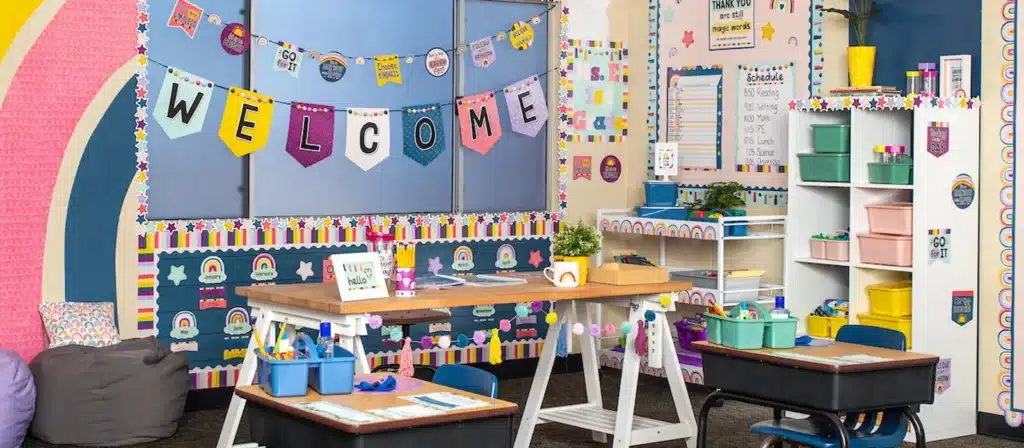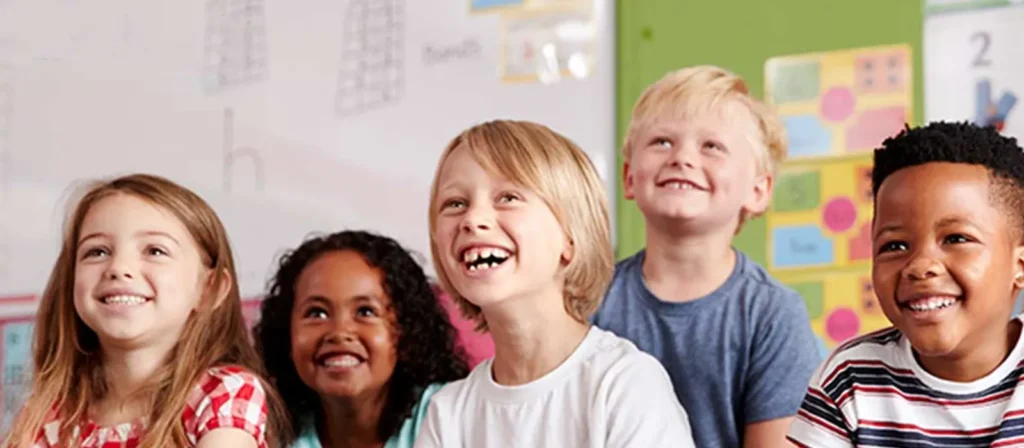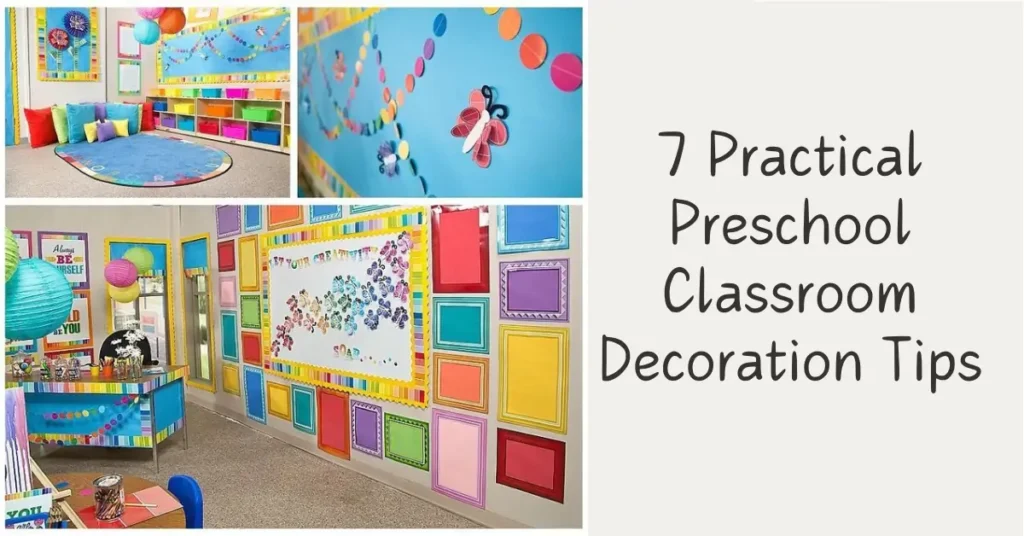Building a preschool classroom is a creative endeavor that requires careful consideration of aesthetics and functionality. However, studies have shown that ornately decorated classrooms can distract and impair children’s attention and memory. Foster curiosity and a love of learning in preschoolers with the right preschool classroom decoration tips!
Preschool classroom decoration tips are to understand the needs of young children, their emotional values, and age-appropriate design layouts.
Curious about how to achieve this perfect balance? Keep reading for practical tips and expert advice.
1. Classes Should Be Engaging, Not Distracting
What should teachers do to decorate their preschool classrooms?
- Colors: They can influence mood, focus, and even behavior.
- Lighting: Natural light is the best choice for preschool classroom decorating as it has been shown to improve mood.
- Wall Decoration: Walls offer a large canvas for creative and preschool room decorations.
- Bulletin Board: Bulletin boards are versatile tools that can be used for various purposes, from displaying student work to showcasing important information.
- Showcase Student Work: Showcasing student work is a beautiful way to decorate the classroom and boost children’s self-esteem.
- Overuse of Visual Aids: Visual aids are essential in preschool classroom decor, but too many can be overwhelming.
- Avoid Chaos: A cluttered classroom can be distracting for young learners.
- Carpet: They provide a soft surface for children to sit on during circle time, reading sessions, and play activities.
- Natural Elements: Use plants to add greenery and fresh air.
Preschool classroom decoration tips are to use bright, exciting colors and interactive decorations. However, it’s important not to overdo it. Too many colors or too much visual clutter can distract children and hinder their ability to focus.
2. Decorating for Preschoolers

When decorating for preschoolers, it’s important to consider their developmental needs and interests. Children at this age learn best through play and exploration, so create a classroom environment that supports these activities.
Incorporate interactive elements such as sensory tables, art stations, and play areas. Use child-friendly, safe, durable, and appropriately sized furniture for preschoolers. Incorporate soft furnishings like rugs and cushions to create cozy, inviting spaces where children can relax and feel comfortable.
3. Make Purposeful Classroom Decorations
Use decorations as an educational tool to reinforce learning concepts and support curriculum goals. The goal of decorating the classroom is to create a welcoming and fun environment where they feel respected, safe, cared for, and calm. If a classroom decorating idea does not support these educational goals, it should not be placed in the classroom.
For example, create themed bulletin boards that display students’ work or showcase seasonal topics. Incorporate educational posters and charts that cover key concepts such as the alphabet, numbers, shapes, and colors. These visual aids can help reinforce learning and provide reference points for children throughout the day.
4. Think of the Classroom as a Third Teacher

The classroom is considered the third teacher after parents and teachers. Methods such as Reggio and Montessori place it at the forefront of pedagogy, a philosophy emphasizing the physical environment’s importance in shaping children’s learning experiences.
To implement this approach, create a classroom environment that encourages exploration, discovery, and independent learning. Arrange furniture and materials in a way that promotes self-directed activities and fosters curiosity.
Provide various materials and resources that children can use in different ways, such as blocks, art supplies, and loose parts. This encourages creativity, problem-solving, and critical thinking skills.
5. Communicate the Value of the Classroom

The classroom environment reflects the learning values and educational goals you hold. It should tell children this is a learning, exploration, and creativity space. Start by organizing the classroom in a way that promotes these values.
Create learning stations catering to reading, art, science, and sensory play. Each station should be clearly defined and equipped with the necessary materials. This organization helps children understand the purpose of each area and encourages them to engage in various activities throughout the day.
Use visual aids and displays to reinforce the learning goals. For example, a wall dedicated to a rotating theme can showcase relevant vocabulary, images, and children’s work. This makes the space visually appealing and provides constant learning and inspiration.
Furthermore, incorporate elements that celebrate the children’s achievements. Display their artwork, projects, and photographs around the classroom. This creates a sense of pride and belonging among the students, reinforcing that their contributions are valued.
6. Importance of Representation
All children in the classroom feel seen and valued. This includes integrating diverse materials, images, and resources that reflect the backgrounds and experiences of all students.
Start with books and educational materials that feature diverse characters and stories. Ensure your classroom library includes books representing various cultures, abilities, and family structures. This promotes inclusivity and broadens children’s understanding of the world.
Decorate the classroom with posters, artwork, and images that reflect diversity. Use these visuals to spark conversations about different cultures, traditions, and lifestyles. This helps children appreciate and respect differences from a young age. Consider the needs of all learners when setting up classrooms. Provide materials and resources that cater to different learning styles and abilities.
7. Preschool Classroom Decoration Tips: Define Classroom Style
Your classroom style should be consistent with your educational philosophy. Consider the overall aesthetic and how it supports a positive learning environment. Classroom color choices should avoid overly busy patterns and too many contrasting colors, as these can distract young children.
Furniture is another critical element that defines a classroom’s style. Choose items that are functional, durable, and child-friendly. Modular furniture that can be easily rearranged allows for flexibility in classroom layout and supports various activities. Natural wood furniture can add warmth and naturalness to a space.
Consider using classroom-themed décor that aligns with your curriculum. For example, if you focus on a nature theme, use decorations and materials that reflect that theme. If you don’t know where to start, you can start with educational articles, Pinterest, YouTube, etc. Look for topics that fit your educational style.










